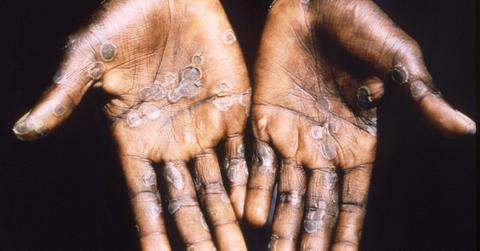Ex-CDC Head Admits Containing Monkeypox Will Be Difficult, But Can Be Done

Aug. 8 2022, Published 2:54 p.m. ET
During an appearance on CBS's “Face the Nation With Margaret Brennan,” former FDA commissioner and current Pfizer board member Dr. Scott Gottlieb suggested that while containing the spread of monkeypox is at this point a difficult challenge, it can still be done, RadarOnline.com has learned.
“We need to start looking for cases in the broader community,” Gottlieb said. “And that means probably testing anyone who presents with an atypical case of shingles or an atypical case of herpes, for monkeypox as well.”
“I think if we're gonna contain this and make sure that it doesn't spread more broadly in the population, we need to start testing more broadly,” he added. “Right now, CDC has the capacity to conduct about 80,000 tests a week. They're doing about 8,000. So, they can broaden this substantially by changing the case definition.”
Gottlieb made his comments as monkeypox cases continue to explode in the U.S. The situation has been called a public health emergency.
There have been more than 7,500 cases reported across the U.S., according to data from the Centers for Disease Control. New York, by far, has the most cases with 1,862.
Another immediate move Gottlieb suggested is monitoring wastewater nationwide. He said it's something the CDC can institute immediately and that it could help identify geographic locations where authorities may not currently be aware of spread.
In the wake of the White House's declaration of a monkeypox public emergency, Gottlieb noted how one of the first immediate moves could be the rationing of monkeypox vaccine. He said the decision could come as early as this week.
“What they would do is cut the dose to a fifth, so they only give one fifth of the dose,” Gottlieb explained on the program. “And instead of injecting it subcutaneously, so below the skin, they'd inject intradermally into the skin, so into the top layer of the skin.”

“So think about a test that you get, for example, for tuberculosis, where you used to get an injection under the skin and you'd get a small welt as they injected fluid under the skin. That's an intradermal infection. We know that we inject certain things into the skin in that way, it's very immunogenic, you get a strong immune response.”


